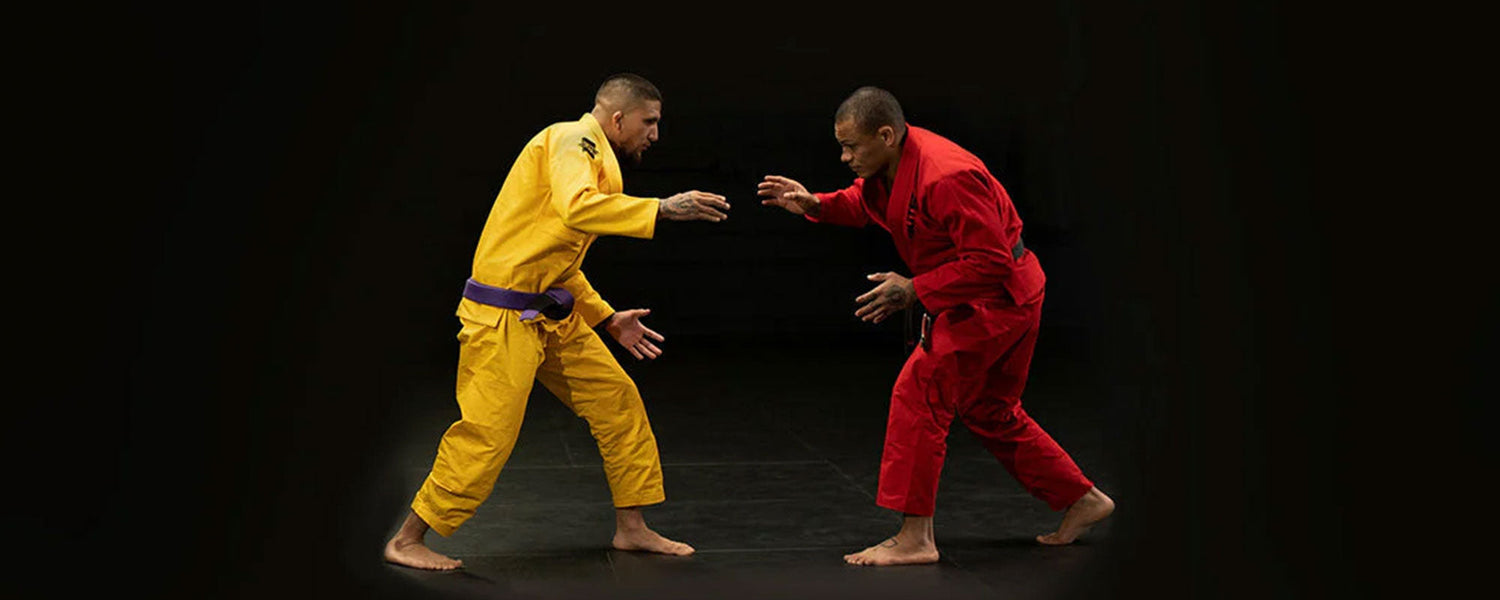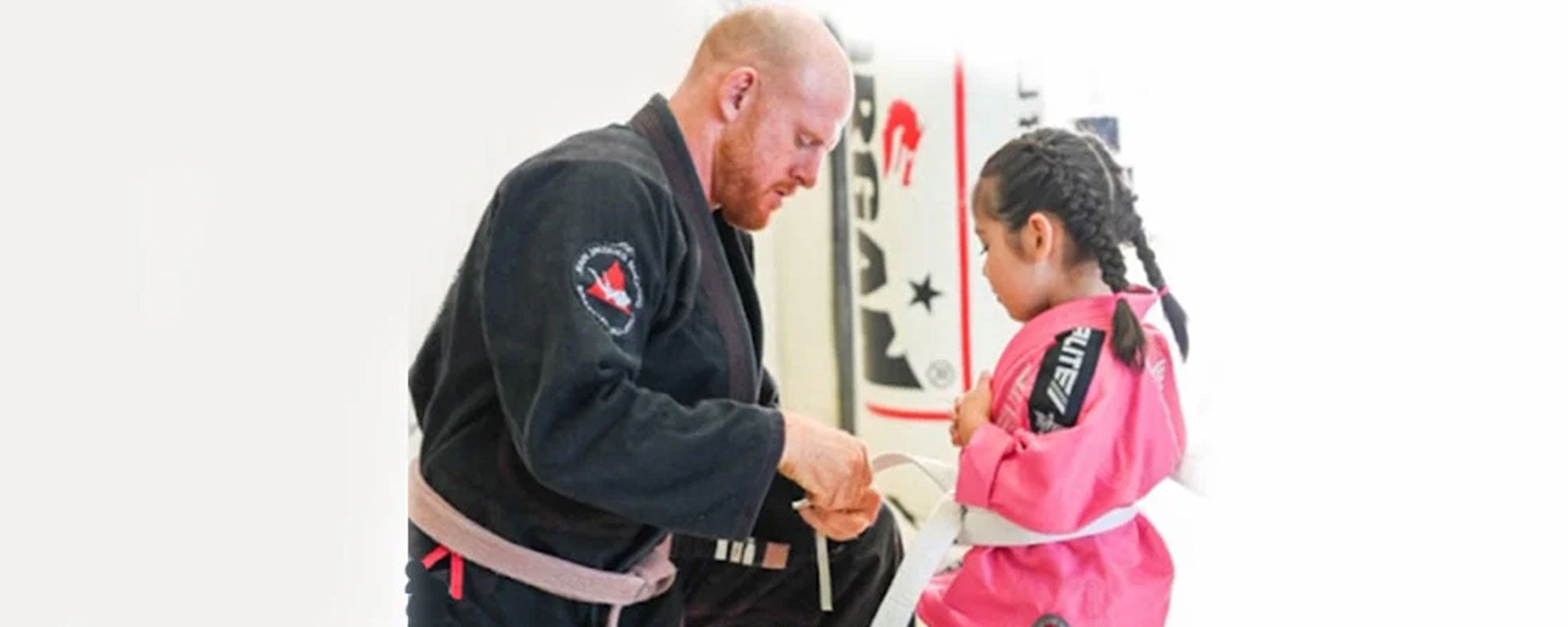Table of content
Striking includes using hands, knees, elbows, and feet for fighting but grappling involves control of an opponent to submit by chokeholds and joint locks. No doubt! Striking of any kind is forbidden in Brazilian jiu-jitsu. The main purpose of BJJ is to train fighters to win without striking by controlling their opponent. But with the evolution of grappling art, striking in some styles of jiu-jitsu still confuses fighters if BJJ uses any strikes. To clarify this we need to shed light on the categories of jiu-jitsu taught today.
Also read: Ultimate Guide to the Half Nelson in BJJ
1. Types of Jiu-Jitsu
Based on the striking factor, there are three types of jiu-jitsu taught these days that have evolved from the original jiu-jitsu.
1.1. Japanese Jiu-Jitsu (JJJ)
JJJ is the original form of jiu-jitsu that purely focuses on the traditional aspects and includes submissions as part of their teaching lessons other than striking. All other forms of jiu-jitsu have evolved from it. There are not many sparring matches in this form. This technique was taught to Samurai for actual battles.
1.2. Brazilian Jiu-Jitsu (BJJ)
BJJ stemmed from jiu-jitsu with the contribution of the Gracie family. They gave it a feel of wrestling and taught it to control opponents to win fights. But still, it does not include striking.
BJJ fighters are familiar with basic striking techniques and can use them to defend themselves if necessary. BJJ uses sparring and rolling as forms of its training. This is mostly a grappling sport.
1.3. Gracie Jiu-Jitsu (GJJ)
GJJ is the further jiu-jitsu evolution that is the subcategory of BJJ. It focuses on self-defense with striking techniques. This form of art is mainly designed to deal with the risks of real-life situations. Grapplers with striking techniques end the fight more quickly.
2. Elements of BJJ
2.1. Sport Jiu-Jitsu
BJJ has its main concentration as a sport. It focuses on the sport's aspect rather than strikes. That is why it teaches you modern sweeps and guard passes. BJJ championship tournaments are held by IBJJF which governs the ruleset, weight classes, and age divisions for the fighters. The struggle of many years is required to achieve the black and blue belt championship
2.2. Basic Striking Techniques are Taught Only for Self-defense
“Self-defense is not just a set of techniques; it’s a state of mind, and it begins with the belief that you are worth defending.”
BJJ is one of the best forms of martial arts in the world that not only requires physical strength but also demands the presence of the mind.
For self-defense, BJJ is splendid as it trains a physically small person to defeat a big person easily. Its self-defense techniques are famous worldwide. Techniques like joint locks and chokeholds, prevent a person from moving. BJJ not only teaches you to defend yourself in street fights but also protects your opponent from being hurt.
For self-defense, the BJJ fighter is also being taught about techniques that involve striking. For example, chokes, takedowns, throwing, and immobilizations often involve basic striking elements that can be used to submit and neutralize your opponent.
We all know that when the strikes add on then the fight changes its form. Thus, a BJJ fighter really must essentially know the distance management and fundamental strikes to try not to counter-go after punches and kicks for their security. That is why basic striking techniques taught for self-defense are part of BJJ fundamentals.
2.3. Ground Grappling
BJJ is a martial art technique that mainly focuses on grappling and ground fighting. Its moves like clinches, break falls, cross chokes, guards, sweeps, hand grips, and many more are used to grapple, lock, control, and submit your opponent safely at the ground position.
2.4. Submissions
BJJ focuses on submissions. This is an attacking technique in which the player tries to choke, strangle, or damage the opponent’s joint. The opponent cannot bear the strain due to submission moves and tends to tap out for his defeat, which signals the victory of the other person.
2.5. Striking is a nonfactor
BJJ sport does not require punching and kicking. Twisting or grabbing the fingers, hair pulling, eye-gouging, scratching, pinching, slams, and slaps are strictly forbidden in BJJ. If it happens, it can lead to straightaway disqualification. In this case, the referee has the right to stop the match and disqualify the fighter who has used the illegal move and can award the opponent with a win.
BJJ competitions do not allow striking so it is also not allowed in casual training as well. Striking is banned in BJJ because it leads to heat up the fight and as a result, both the fighter and opponent can get hurt.
There is no future for a fighter in BJJ with striking behavior. Consistent disqualification for striking behavior in training and competition can tarnish your reputation in BJJ. The BJJ world is very small so your bad reputation can kick you out of BJJ schools as well as from competitions.
If you want to use striking on the ground, then BJJ is not the correct option for you, but still, you can join MMA gyms or opt for Gracie jiu-jitsu to use strikes.

3. What is combat jiu-jitsu?
Combat jiu-jitsu or Gracie jiu-jitsu is an evolutionary breakthrough for Brazilian jiu-jitsu, that not only includes strikes but also supports the striking factor in jiu-jitsu. According to Rener Gracie, a Gracie family member, and another grappler Eddie Bravo supports the fact that the old jiu-jitsu style was mainly focused on self-defense so, modern-day jiu-jitsu should also be equipped with the knowledge of strikes to wrap up your opponent. They suggest striking in BJJ training and creating combat jiu-jitsu which is grappling with strikes. Combat jiu-jitsu aims to add strikes to the sport to enhance its realism.
4. Is it vital to add striking into your BJJ?
When it comes to adding striking to BJJ skills there is another approach that does not support punches and kicks but does support cross-training. Cross-training improves fighters’ grappling and striking skills at the same time and helps in the career of a martial artist. Learning striking besides BJJ can help you to become a well-rounded martial artist if you want to make your career in MMA.
All martial arts, even street fights, end up on the ground, so cross-training in BJJ provides the best self-control, core strengthening, coordination, and base for mixed martial arts.
Moreover, strikes learned through cross-training are eventually effective in real-life situations where there is no rule set in place.
5. How can you add striking to your BJJ?
As mentioned above, BJJ provides the base for mixed martial arts. You can incorporate striking in BJJ through cross-training. Some examples of cross-training styles that teach striking techniques from other martial arts include MMA, Boxing, Kickboxing, and Muay Thai.
Moreover, learning Combat jiu-jitsu or GJJ teaches you grappling with strikes. Eventually, you learn BJJ with strikes at the same time.
6. Does grappling beat striking?
That all depends on what the situation is and whether grappling will work or striking is more effective. If it’s for self-defense then the striking will be effective as it ends the fight quickly and escapes you from difficult situations. But if you are competing in a professional combat sport then grappling has an advantage over a striker with poor grappling skills. That is why most MMA fighters learn grappling to polish their skills and stand out in the octagon.












Leave a comment
This site is protected by hCaptcha and the hCaptcha Privacy Policy and Terms of Service apply.